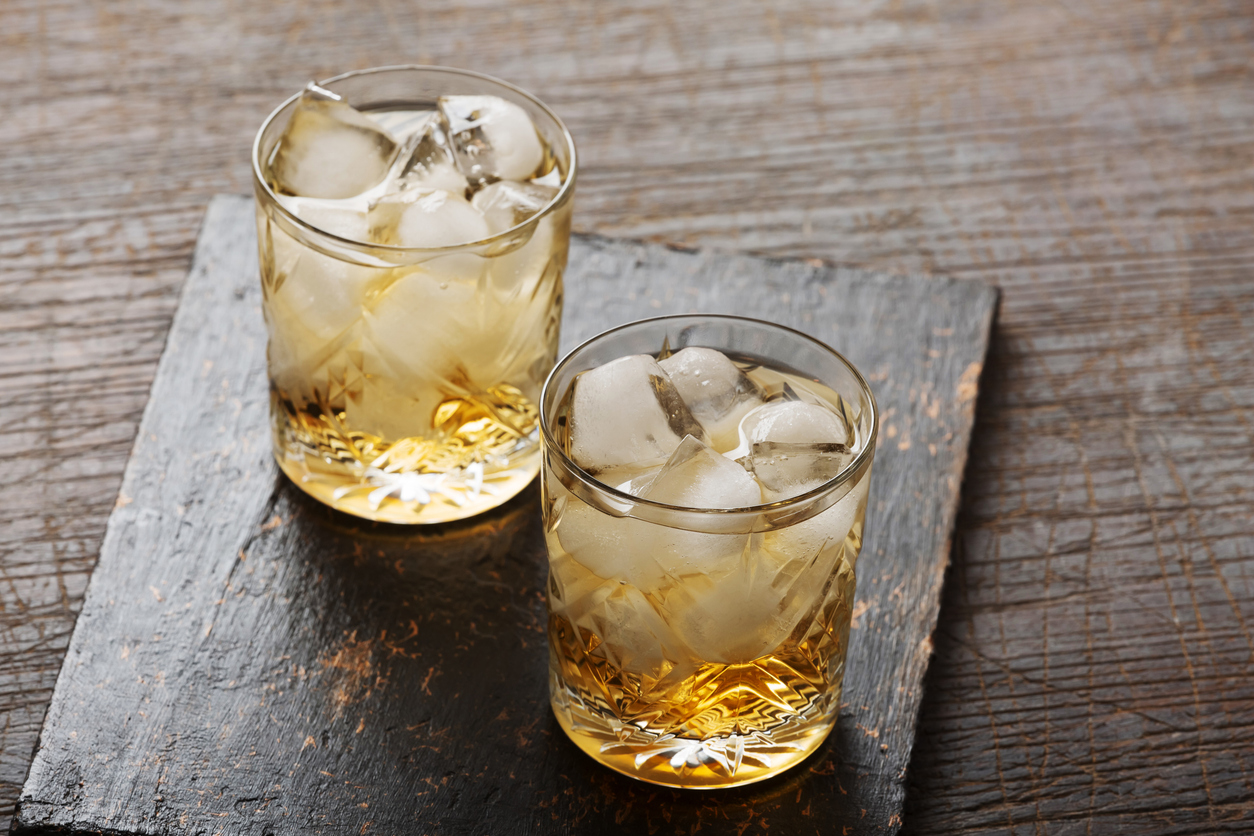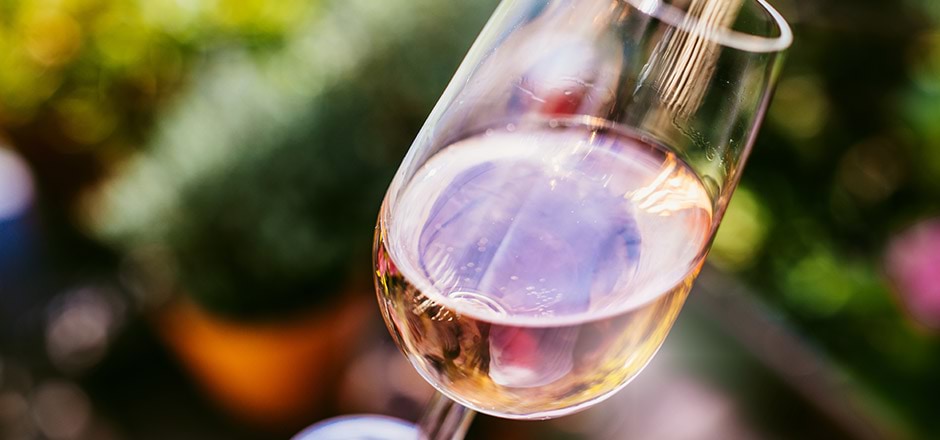- Ask the Experts
Sommelier-speak Made Easy – Your Guide to Common Wine Terms
What’s the meaning of acidity in wine? And what’s the definition of varietal? Our wine terms explainer will help you lift your wine game and sound like an expert in no time.

We’ve all been there – hearing a sommelier use wine terms we’re not quite sure we understand, nodding along like
an aficionado, and wishing our wine vocabulary was just a tiny bit better.
The truth is, the world of wine is complex and there is a long and comprehensive list of wine definitions which can feel a bit overwhelming.
But you don’t have to master the whole wine dictionary – with this cheat sheet to wine terms, learning the lingo for your next wine tasting will be quick and easy.
What’s the difference between full-bodied and light-bodied wine?
The body of a wine is judged using texture rather than taste, based on structural elements such as acid, alcohol and tannins.
Full-bodied is the wine definition used when acidity, alcohol and tannins are high.
A light-bodied wine such as pinot noir, feels lighter in the mouth due to lower acidity, alcohol and tannins.
Acidity is judged by how much you salivate. Just as lemon juice makes your mouth water, wines high in acidity will make you salivate. Wines with high or medium acidity include sauvignon blanc, pinot grigio, albariño (like Marieta Albarino) and crisp rieslings such as this Clare Valley Petaluma riesling.
Alcohol contributes significantly to the body of wine. Higher alcohol means higher viscosity, making the wine feel heavier or fuller-bodied.
ABV is Alcohol By Volume, which refers to the percentage of alcohol content in a bottle. When the ABV is high, wine terms such as warm or hot are used to describe the warming sensation it creates, similar to sipping a spirit neat.
Tannins are compounds which come from grape skins, stalks and oak barrels, producing a drying sensation when they bind to the saliva in your mouth. Tannins mostly occur in red wines, with high tannic wines including shiraz, cabernet franc (try the Dulon Reserve Saint Emilion), durif (such as this Deen De Bortoli Vat 1 Durif), cabernet sauvignon and nebbiolo. Wines with low tannins include gamay, grenache and merlot.
To better understand the difference between full-bodied and light-bodied wine it helps to compare the texture and weight of skim milk with cream. For white wines compare this full-bodied Mondavi chardonnay from the United States with this light-bodied New Zealand Te Tera Sauvignon Blanc. For reds, see how the full-bodied Margaret River Vasse Felix cabernet sauvignon stacks up against the lighter bodied The Group pinot noir from Adelaide Hills.
Wine words for aroma and flavour
Aroma and flavour descriptors provide a common language for wine tasting.
Descriptors are the words you use when speaking about what you can smell and taste in a wine, from flowers such as blossom or violets, to fruits including lemon, peaches, cherries and blackcurrants, herbs including thyme and dill and spices such as pepper, nutmeg and cinnamon.
Finish or length describes how long the flavours remain on the palate after sipping wine. If the flavours disappear quickly the finish is short, if they persist, it’s described as a long finish.
Balance refers to how the structural and flavour components of a wine work together to create a harmonious whole, and whether any one aspect of the wine (for example, acidity) overwhelms the others.
Sweetness in wine tasting refers to the perception of sweetness on the palate, which can range from dry to sweet.
Residual sugar refers to the remaining sugars in the wine after fermentation of grape juice is completed.
A dry wine such as sauvignon blanc has no perceptible sweetness on the palate. Wines classified as sweet wines have obvious sweetness to them such as ice wine, dessert wines and often, fortified wines.
Fortified wines have had spirit added to them so the alcohol levels range between 15.5% – 22% abv, and are usually sweet – think port (Penfolds Club Old Tawny is a fine example), sherry (like Harveys Bristol Cream) and muscat (try McWilliams Hanwood Classic Muscat) – but can also be dry.
Brut is a sparkling wine term commonly used in sparkling wines to indicate the level of sweetness in the wine. Brut means the wine is on the drier side.
Wine production terms that are good to know
It’s not just the words you use at a wine tasting, it helps to know some key terms that the industry uses in the winemaking process.
Appellation is a French wine word specifying a designated area where grapes are grown for wine production – which is reflected on the wine label. An example is Champagne – only wines made with fruit grown within the borders of the Champagne region in France are allowed to use the word Champagne on the label.
Terroir is another French wine term referring to the environment in which the vines were grown, including a range of things such as climate, soil type and vineyard management, which all have an impact on the final product.
Lees stirring is a wine term used for white wines. Lees are the dead yeast cells at the bottom of the fermentation vessel after fermentation finishes, and winemakers may choose to stir them around inside the vessel to create bread and biscuit flavours as well as a richer texture to the wine (don’t worry, the wine is filtered to remove the lees before bottling). A good example is this Taylors chardonnay.
Whole bunch is a wine term most often applied to red wines such as pinot noir and syrah, indicating the entire grape bunch including stalks was used in fermentation. The Lightfoot & Sons pinot noir is an example of how aroma, texture and colour is boosted using whole bunch.
Saignée is a French wine word meaning “to bleed”, commonly used in rosé production. It refers to a short maceration of skins and grape juice before the juice is ‘bled’ off for fermentation.
Méthode traditionnelle is a sparkling wine term which means that a second fermentation took place inside a sealed bottle, with the carbon dioxide released during fermentation dissolving into the wine, creating bubbles. It indicates the same method used in the Champagne region, and you can find this wine term on a label like the Arras Brut Elite Sparkling NV.
Varietal, used in bottle labelling, describes a wine made from a single grape variety. Varietal labelling highlights the grape used in a wine, rather than the region (a practice common in France – for example, Burgundy wine, in which the white wines are made from chardonnay).
Variety, on the other hand, refers to an actual grape variety, such as, say, pinot noir or sauvignon blanc.
Vintage, in the context of wine, refers to the year the grapes are harvested. Most still wines are single vintage, which means the grapes used in that bottle are from one year, and non-vintage wines (especially common in sparkling and fortified wines) are a blend of different harvests.
Bookmark this quick wine glossary of the most common terms across white, red, rosé and sparkling wines and you will be speaking like a pro in no time.
Keen to learn more? Here’s an in-depth explainer on tannins.
- Also in Ask the Experts
- View More Post Ask the Experts



